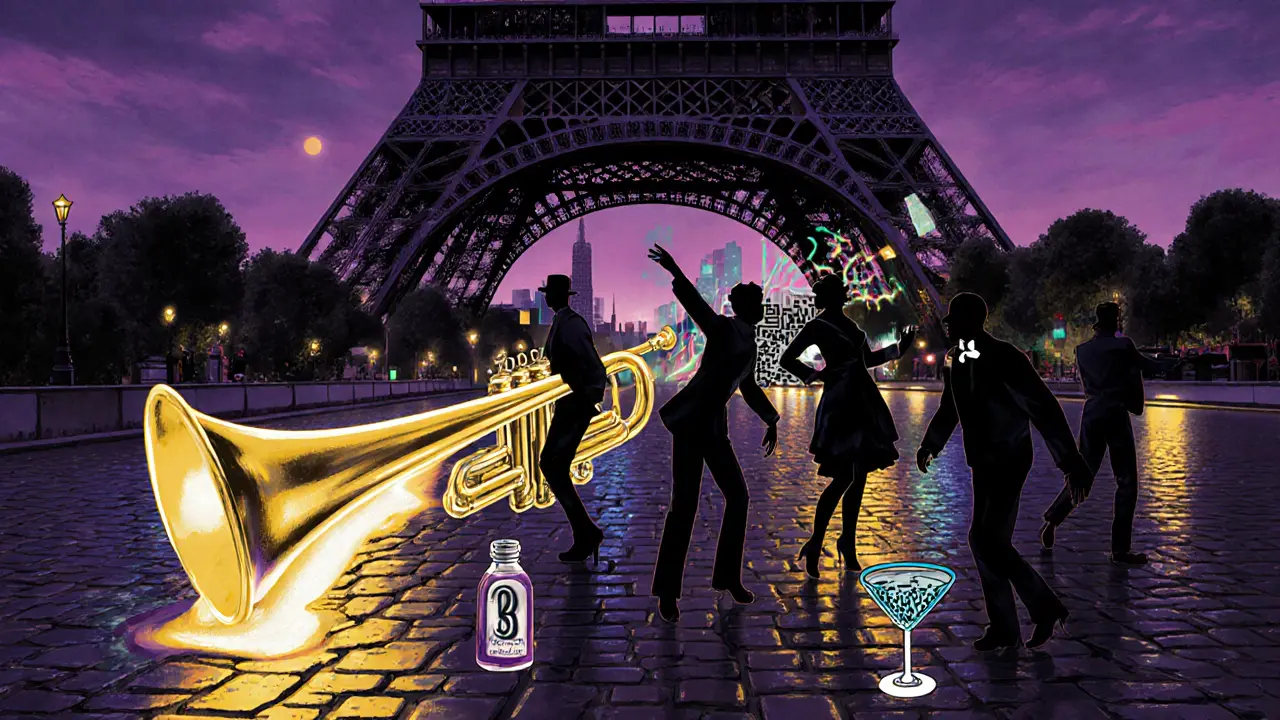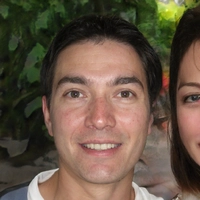Paris wasn’t always about neon lights and bass-heavy clubs. A hundred years ago, the city’s nights belonged to jazz clubs tucked into basement rooms, poets sipping absinthe at midnight, and cabarets where dancers moved like shadows under gaslight. Today, you can walk from a 1920s speakeasy to a rooftop techno venue in under ten minutes. The evolution of Paris nightlife isn’t just about new venues-it’s about who’s dancing, what’s playing, and why people still come back after all these decades.
The Jazz Age and the Birth of Parisian Nightlife
In the 1920s, Paris became the unofficial capital of cool. American expats like Josephine Baker and Django Reinhardt turned the city into a magnet for artists, writers, and rebels. Places like Le Caveau de la Huchette in the Latin Quarter didn’t just play jazz-they made it live. Musicians jammed until dawn, and the air smelled of cigarette smoke, sweat, and cheap wine. This wasn’t entertainment for tourists. It was rebellion.
At the same time, Montmartre’s cabarets like Le Moulin Rouge and Le Chat Noir turned nightlife into spectacle. Dancers in feathers and corsets, acrobats, and illusionists drew crowds from across Europe. These weren’t just clubs-they were immersive theater. The rules were simple: dress up, be bold, and don’t ask for permission. That spirit still echoes in today’s underground bars.
The Quiet Years: When Paris Slept
By the 1980s, Paris nightlife had lost its edge. The city’s post-war focus on order and safety led to strict closing times-2:00 a.m. for bars, 3:00 a.m. for clubs. Many venues shut down. The youth moved to suburbs or stayed home. The few remaining clubs were either tourist traps or faded relics. For a while, Paris felt like a city that had forgotten how to have fun after dark.
But the quiet didn’t last. In the late 1990s, a new generation of Parisians-raised on house music, indie rock, and DIY culture-started throwing parties in abandoned warehouses. They didn’t need permission. They just needed a space, a sound system, and a crowd willing to stay up all night. These weren’t advertised on posters. They were shared via word of mouth, fax machines, and later, early forums. This was the birth of Paris’s underground scene.
The Rise of Le Marais and the New Wave
By the early 2000s, Le Marais had become the heart of Paris’s nightlife revival. Once a quiet Jewish quarter, it transformed into a hub for LGBTQ+ culture, indie bands, and craft cocktail bars. Le Comptoir Général opened its doors in 2007-a hybrid bar, museum, and art space that felt more like a secret clubhouse than a business. It didn’t have a sign. You had to know where to look.
Meanwhile, La Bellevilloise and La Cigale began hosting electronic music nights that drew crowds from Berlin, London, and Tokyo. These weren’t just parties-they were cultural events. DJs like St. Germain and Daft Punk (who grew up just outside Paris) helped fuse French house with global beats. The city started to sound different. Less chanson, more pulse.
By 2015, Le Marais had over 120 bars and clubs open past 2 a.m. The city council, once hostile to late-night culture, began offering grants to venues that stayed open past midnight. They called it “cultural vitality.” Locals called it survival.

Today’s Paris: Diversity in the Dark
Paris nightlife today doesn’t have one identity-it has dozens. In the 11th arrondissement, you’ll find Le Trabendo, a converted train station that hosts everything from punk gigs to Afrobeat nights. In the 18th, La Gaité Lyrique turns into a techno temple on weekends, with crowds dancing under holographic projections. In the 13th, Chinese and African communities run vibrant late-night spots where you can eat dumplings at 4 a.m. and dance to K-pop remixes.
Even the old guard has adapted. Le Caveau de la Huchette still plays jazz-but now, it’s a mix of traditional New Orleans tunes and modern French jazz fusion. Tourists still come. But so do 20-year-old students who discovered it on TikTok.
Drinks have changed too. The days of cheap red wine and sugary cocktails are fading. Craft gin bars like Le Perchoir and Bar à Vin offer tasting menus with regional French spirits. Mixologists now study botany, not just recipes. One bartender in Le Marais uses lavender from Provence and wild thyme from the Jura Mountains. He doesn’t call it a cocktail. He calls it a story.
What’s Missing? The Cost of Cool
But not all of Paris’s nightlife evolution is positive. Rent in Le Marais has tripled since 2010. Many independent venues can’t afford the monthly lease. Some have closed. Others have turned into overpriced lounges where a cocktail costs €18 and the music is background noise for Instagram selfies.
The city’s 3 a.m. curfew still exists. It’s not enforced the same way everywhere-some clubs ignore it quietly-but it’s a shadow hanging over the scene. Police raids still happen. In 2023, La Gaité Lyrique was temporarily shut down after a noise complaint from a new luxury apartment building built right next door. The owner said, “We didn’t move out. They moved in.”
And while Paris celebrates diversity, access isn’t equal. Many underground parties still require an invite or a password. Some venues are unwelcoming to non-French speakers. Others charge €15 to enter before midnight and €30 after. The magic of the underground is becoming a luxury experience.

Where the Night is Headed
Paris nightlife isn’t slowing down-it’s splintering. New neighborhoods are rising. The 20th arrondissement, once overlooked, now has La Bellevilloise’s sister venue, La Station, a former train depot turned multi-genre space. In the 19th, Le Pluriel hosts queer dance nights that draw 800 people on weekends.
Technology plays a role too. Apps like Eventbrite and Dojo let you discover secret parties in real time. Some venues use blockchain tickets to prevent scalping. Others use AI to curate playlists based on crowd energy.
But the heart of Paris nightlife hasn’t changed. It’s still about connection. About finding a place where you don’t have to explain yourself. Whether it’s a basement jazz club, a rooftop rave, or a midnight kebab joint with live Arabic music, the goal is the same: stay awake, feel something, and keep going.
What You’ll Find Tonight
- For jazz lovers: Le Caveau de la Huchette (open until 5 a.m., no cover before 10 p.m.)
- For techno heads: La Gaité Lyrique (Saturdays, 11 p.m.-6 a.m., free entry before midnight)
- For craft cocktails: Le Perchoir (rooftop views, live acoustic sets on Fridays)
- For late-night eats: Chez l’Ami Jean (24-hour Basque kitchen, best steak frites in the city)
- For hidden gems: Check Dojo app for pop-up parties in abandoned bookstores or laundromats
Paris doesn’t sleep. It just changes shape. And if you’re willing to wander past the postcard spots, you’ll find nights that still feel like magic.
What time do Paris clubs usually close?
Most clubs in Paris officially close at 3 a.m. due to city regulations, but many stay open later unofficially. Popular venues like La Gaité Lyrique and Le Perchoir often let people stay until 5 or 6 a.m., especially on weekends. Police rarely interfere unless there’s a noise complaint or public disturbance.
Is Paris nightlife safe at night?
Yes, most areas with active nightlife-Le Marais, Oberkampf, the 11th and 13th arrondissements-are very safe at night. Like any major city, petty theft can happen near crowded metro stations or tourist spots. Avoid poorly lit alleys and keep your belongings close. The city has increased nighttime patrols in popular areas since 2020.
Do I need to speak French to enjoy Paris nightlife?
No, but it helps. Many venues in tourist-heavy areas like Le Marais and Saint-Germain have English-speaking staff. But underground spots, especially in the 18th and 20th arrondissements, may not. A few basic phrases-"Une bière, s’il vous plaît," or "Où est la salle de bain?"-go a long way. Locals appreciate the effort.
Are there age restrictions for Paris clubs?
Most clubs require you to be at least 18 to enter. Some venues, especially those serving alcohol late at night, enforce a 21+ rule. ID is always required. Fake IDs rarely work-French police are strict, and many clubs use electronic ID scanners.
What’s the best night to go out in Paris?
Friday and Saturday nights are the busiest, with the most events and longest hours. But Wednesday and Thursday nights are often the best for locals-fewer crowds, lower prices, and more experimental lineups. Some venues even offer free entry on "Mercredis Underground" (Underground Wednesdays).
Can I find vegan or vegetarian options in Paris nightlife spots?
Absolutely. Most bars now offer at least one vegan snack or small plate. Places like Le Potager du Marais and Vegan Folie’s serve full meals until 2 a.m. Even traditional bistros now label vegan options on their menus. The city has over 120 fully vegan-friendly venues.
If you’re looking for something real-not just another bar with a view-wander off the main streets. The best nights in Paris aren’t on Instagram. They’re the ones you stumble into by accident.
